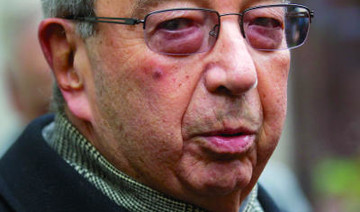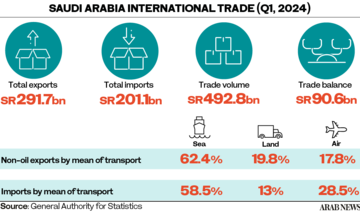MOSCOW: A Russian Finance Ministry proposal to overhaul the tax system could create a budget shortfall and put upward pressure on inflation, Tatiana Golikova, the head of Russia’s Audit Chamber, told Reuters in an interview.
The ministry has proposed cutting employers’ mandatory social security contributions with the aim of enticing businesses out of the shadow economy. To offset that, it proposes increasing value-added tax (VAT) to 22 percent from 18 percent.
The ministry wants the combined change to take effect from 2019. But the intervention from Golikova, an influential former government minister and deputy finance minister, indicates the proposal could face resistance from some quarters in ruling circles.
Golikova, whose audit chamber is responsible for monitoring whether the government is using budget spending effectively, said the changes would force the government to increase its support for the pension fund.
The Finance Ministry’s proposal is to cut employers’ social security contributions to 22 percent of a worker’s salary from their current level of 30 percent. A part of the contributions goes into the state pension fund to help keep it topped up.
The fund is already in deficit, a problem the Finance Ministry itself says needs to be addressed, and the drop in social security contributions will mean that less money is going into the fund, she said.
Asked if the proposed tax changes would increase the burden on the budget, Golikova said: “In this conception, in this construction, yes.”
The Russian budget had to provide around 3.4 trillion roubles ($17.40 billion) to cover the Pension Fund’s liabilities last year, an extra burden on a budget already straining under low tax revenues.
According to the Chamber’s calculations, under the finance ministry’s proposal social security payments would go down by 1.5 trillion roubles while revenues from VAT would increase by only 1.3 trillion roubles.
In the interview, Golikova said the other consequence of the proposed tax changes would be on inflation, which the central bank is seeking to get under its target of 4 percent by the end of 2017.
The Finance Ministry has acknowledged that the VAT increase may result in a one-off 2-percentage-point increase in inflation. Golikova said that would have far-reaching consequences for monetary policy and for ordinary people.
“This (proposal) means that a half or even more of that 4 percent (of inflation)... would be made by our own hands... This means that the central bank will have to make additional efforts to maintain the inflation level,” Golikova said.
“This is a significant factor affecting social policy.”
Prices rose 4.6 percent in the year to February. Upward pressure on inflation could force the central bank to keep interest rates higher for longer than it would otherwise have done, constraining an economic recovery.
Golikova said the Audit Chamber had yet to calculate how the proposal would affect economic growth. The Russian economy shrank 0.2 percent in 2016 and the economy ministry expects it to grow by 2 percent this year.
Russian tax plan could put pressure on budget and inflation — audit chief
Russian tax plan could put pressure on budget and inflation — audit chief

Oil Updates – crude steady as investors weigh US rate fears, firmer seasonal demand
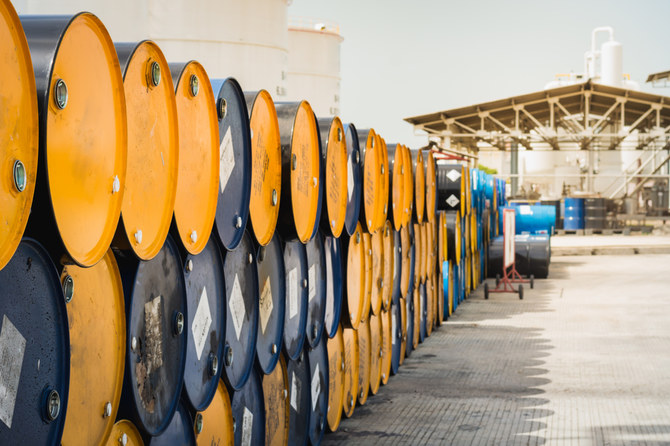
SINGAPORE: Oil prices were stable on Friday as investors considered the latest comments from the US Federal Reserve on interest rates amid sticky inflation, while signs of firming seasonal US fuel demand lent support, according to Reuters.
Brent crude futures rose 2 cents at $81.38 a barrel at 6:15 a.m. Saudi time, while US West Texas Intermediate crude futures were down 1 cent at $76.86.
Both benchmarks settled at multi-month lows on Thursday, with Brent crude futures closing at their weakest point since January and US crude futures hitting a three-month low.
Brent futures were headed for weekly declines of more than 3 percent, while WTI futures were poised for a slide of nearly 4 percent from last week as ongoing macroeconomic constraints in the US held prices in the balance.
“The sore demand sentiment owing to the hawkish Fed outlook at rates and the backdrop of ‘possibly higher-for-longer rates’ weighed significantly on oil prices this week,” said Priyanka Sachdeva, a senior market analyst at Phillip Nova.
Minutes released on Wednesday from the Fed’s latest policy meeting showed policymakers questioning whether current interest rates are high enough to tame stubborn inflation.
Some officials said they would be willing to hike borrowing costs again if inflation surged. However, Fed Chair Jerome Powell and other policymakers have since said they feel further rate hikes are unlikely.
Higher rates could slow economic growth and crimp fuel demand.
Meanwhile, strengthening US gasoline demand was helping to stabilize prices ahead of the Memorial Day holiday weekend, which is considered the start of the US summer driving season.
Gasoline demand in the US reached its highest level since November, the Energy Information Administration said on Wednesday. That helped support the market as US drivers account for around a tenth of global oil demand, “making the upcoming driving season a pillar of the recovery in global demand growth,” ANZ analysts said in a note.
All eyes are now on the Organization of the Petroleum Exporting Countries and allies, together called OPEC+, set to meet on June 1, where they are expected to discuss whether to extend voluntary oil output cuts of 2.2 million barrels per day.
“The market is also tentative about taking an aggressive positioning ahead of next week’s OPEC meeting, where supply policy will be discussed,” ANZ analysts added.
Oil creeps back up after three days of losses

Oil prices crept up on Thursday, clawing back some of the previous three days’ losses.
The gains were made despite the US Federal Reserve entertaining a further tightening of interest rates if inflation remains sticky, a move that could hurt oil demand.
Brent crude futures were up 92 cents, or 1.1 percent, at $82.82 a barrel by 1317 GMT. US West Texas Intermediate crude futures were 97 cents, or 1.3 percent, higher at $78.54. Both benchmarks fell more than 1 percent on Wednesday for their third straight day of losses.
Saudi crude exports
Saudi Arabia’s crude exports reached 6.41 million barrels per day in March, according to an analysis from the Joint Organizations Data Initiative.
This figure increased by 96,000 bpd, or 1.52 percent, compared to the previous month, marking a nine-month high. Furthermore, the data indicated that the Kingdom’s crude production fell to 8.97 million bpd, reflecting a monthly decrease of 0.42 percent.
This can be linked to the voluntary oil production cuts adopted by members of the Organization of the Petroleum Exporting Countries and their allies, known as OPEC+. Saudi Arabia announced in March the extension of its 1 million bpd cut, initially implemented in July 2023, until the end of the second quarter of 2024.
The Ministry of Energy said that the Kingdom’s production will be approximately 9 million bpd until the end of June.
Meanwhile, refinery crude output, representing the processed volume of crude oil yielding gasoline, diesel, jet fuel, and heating oil, fell by 4 percent compared to the previous month, reaching 2.56 million bpd, according to JODI data.
IMF demands Pakistan secure parliamentary approval on reforms for loan agreement— official
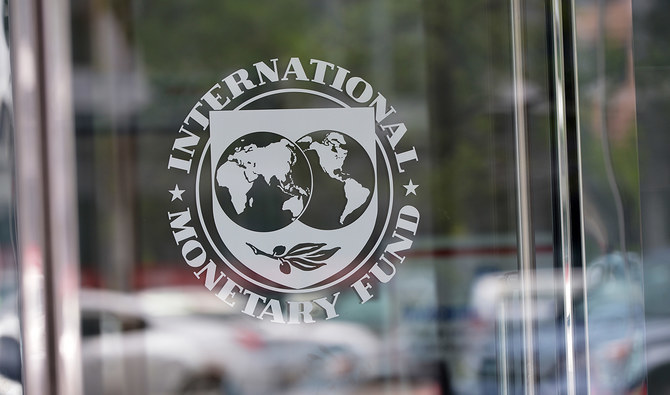
- Government will present “prior actions” needed to secure IMF loan in federal budget next month, says finance ministry official
- Leading economist says Pakistan left with no option but to secure IMF bailout to meet external financing needs of $80 billion
ISLAMABAD: The International Monetary Fund (IMF) has asked Pakistan to seek parliamentary approval on major economic reforms related to the energy, power, tax sectors and on the privatization of state-owned enterprises (SOEs) before starting formal talks for another loan program, a finance ministry official said on Thursday.
Facing low foreign exchange reserves, currency devaluation and high inflation, Pakistan last month completed a short-term $3 billion IMF program that helped stave off a sovereign default. However, the government of Prime Minister Shehbaz Sharif has stressed the need for a fresh, longer-term program with the global lender.
An IMF mission reached Islamabad last week to negotiate with Pakistani authorities for a fresh bailout program, holding talks with officials on reforms in key economic sectors. The mission is wrapping up its visit today, Thursday, without reaching any staff-level agreement with Islamabad.
The government would present the economic reforms demanded by IMF or “prior actions” in parliament in the Finance Bill 2024-25 likely to be presented on June 7, the finance ministry official with knowledge of the negotiations, said on condition of anonymity.
“The IMF has suggested authorities to get parliamentary approval for the new loan program’s targets and conditions before initiation of the formal talks,” the official told Arab News.
“In fact, these are the prior actions that Pakistan is required to take care of before reaching a staff-level agreement with the Fund for the new bailout package.”
The international lender has urged Islamabad to overhaul its SOEs and introduce tax, energy and power reforms. Pakistan has had to take painful measures in line with the IMF’s demands since 2022, which included hiking fuel and food prices.
The finance ministry official said the government intends to introduce key reforms in the energy and power sectors in line with the IMF’s demands, besides broadening the tax base through progressive initiatives.
“The government will take all parliamentary parties into confidence over the digitalization of the Federal Board of Revenue and the privatization of the SOEs,” he added.
Sajid Amin, a senior economist and deputy executive director at the Sustainable Development Policy Institute (SDPI), said the government had “no option but to secure the IMF loan program.” He said the IMF’s program was critical in helping Pakistan meet its external financing needs of around $80 billion in the next three years.
“The IMF wants political ownership of the loan program and that’s why it is pushing the government to get all the targets and conditions approved by the parliament,” Amin told Arab News.
“The biggest challenge for the government is to convince the coalition partners and opposition over its reforms agenda to secure the IMF loan,” he said.
Amin warned the upcoming IMF program would be the “toughest” one for the government as it would not be easy for it to complete it.
Goldman Sachs to establish regional headquarters in Riyadh: report
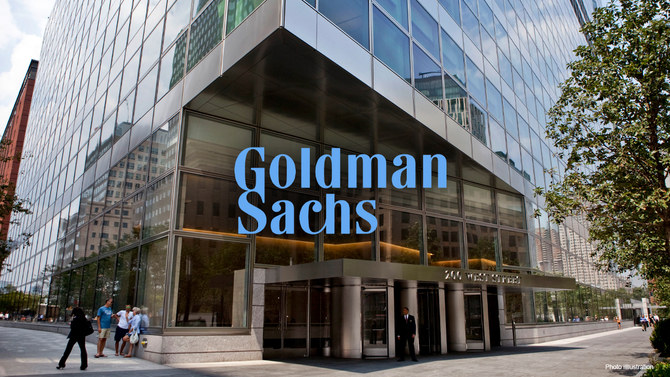
RIYADH: Goldman Sachs Group is set to become the first Wall Street bank to establish its regional headquarters in Saudi Arabia as it has reportedly obtained a license from the Ministry of Investment, reported Bloomberg.
As per the recently approved laws in Saudi Arabia, companies with state contracts must have a regional headquarters in the Kingdom with a minimum of 15 employees.
Arab News contacted the Investment Ministry to get a confirmation of the news but officials declined to comment.
It would be pertinent to mention here that Goldman Sachs currently has offices in Doha, Riyadh and Dubai.
Saudi Arabia has outperformed its target for attracting regional headquarters, with over 180 companies now established in the Kingdom. This number surpassed the initial goal of securing 160 HQs by the end 2023.
Saudi Arabia offers tax incentives for foreign companies that locate their regional headquarters in the Kingdom, including a 30-year exemption for corporate income tax.
The tax incentives include zero income tax for foreign entities that move their regional headquarters in the Kingdom, and these benefits can be availed from the date of the regional headquarters issuance license, according to Ministry of Investment.
Saudi Arabia issues 54 industrial licenses in March

RIYADH: Saudi Arabia maintained the issuance of over 300 industrial licenses in the first quarter of 2024, consistent with the previous year, official data has revealed.
According to a statement released from the Kingdom’s Ministry of Industry and Mineral Resources, as many as 324 industrial permits were issued in the first three months of the year, with 54 approvals issued in March alone.
The report further showed that the volume of investments in March amounted to SR1.047 billion ($279 million).
This falls in line with the Saudi Arabia’s ambition to transform mining into a foundational industrial pillar of the country’s economy.
It also aligns with the ministry’s goal to strengthen the sector as well as contribute to the ongoing developments in accordance with Vision 2030.
Moreover, the report, which was issued by the ministry’s National Industrial and Mining Information Center, disclosed that the permits in March were distributed across several sectors, including the manufacturing of non-metallic mineral and food products and formed metal goods as well as chemicals and paper and its products.
According to the analysis, the new industrial licenses were distributed among multiple regions, including the Eastern Province, Riyadh and Makkah, as well as Qassim, Jazan, Madinah, Al-Jouf, and Al-Baha.
The distribution of new permits shows that small enterprises comprised 77.78 percent, with medium-sized companies following at 22.22 percent.
In terms of the type of investments, national factories accounted for the largest percentage of the total licenses, with 98.15 percent, followed by foreign establishments with 1.85 percent.
Furthermore, the study also indicated that the number of factories existing and under construction in the Kingdom until the end of the same month reached 11,832 factories, up from 11,757 facilities in February, with an investment volume of SR1.528 trillion.
Meanwhile, 69 factories started production in March, with an investment volume of SR1.339 billion.
The ministry issues its report monthly to establish the sector’s most critical indicators in Saudi Arabia, demonstrating the extent of change and the growth of industrial investments.
In April, the Kingdom introduced the Mining Exploration Enablement Program, inviting global firms and explorers to participate in the initiative in an attempt to further expand the sector.
According to a statement at the time, Saudi Arabia’s Ministry of Industry and Mineral Resources and the Ministry of Investment extended invitations to international companies in the sector to register for the scheme.
The statement further added at the time that the program is expected to boost exploration activities, optimize the value extracted from the mining sector, and expand the Kingdom’s survey potential by focusing on uncharted territories.




